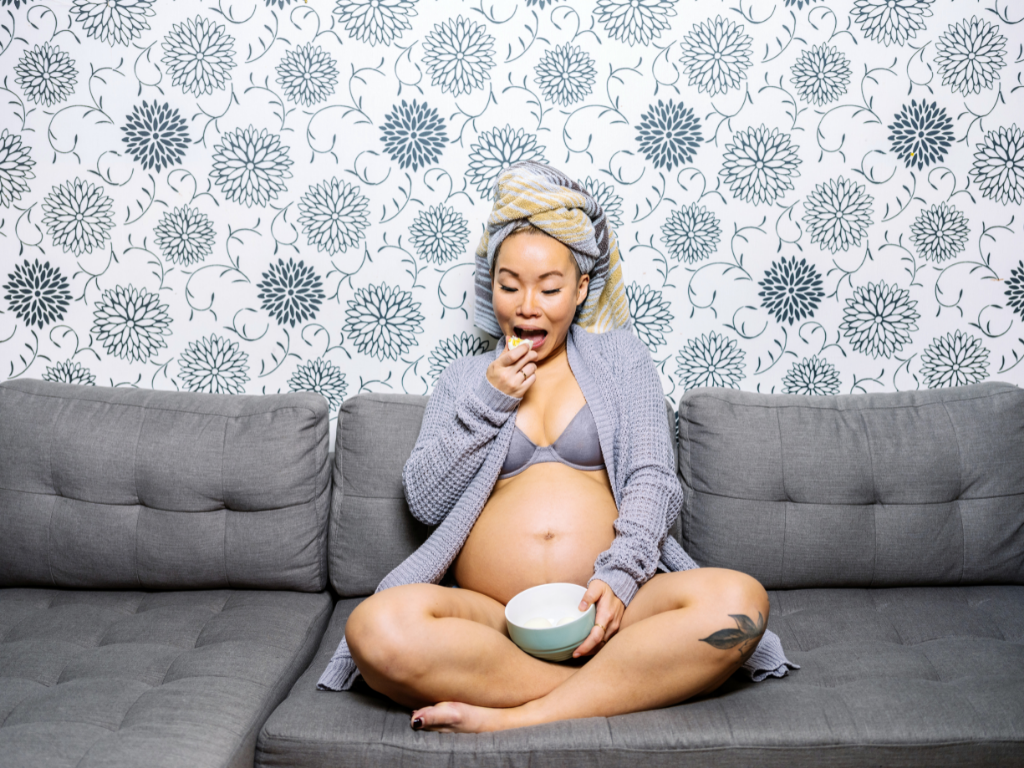Introduction
“Mdm X walked into my clinic one day for her annual health screening with me. She is 49 years old and works as a corporate executive in the busy finance industry. She is very well groomed and the strong scent of Chanel No. 5 was evident as she walked in. Yet, below the strong perfume scent, permeated an unmistakable smell of urine which was very familiar to me from my days working in the hospitals. As I went through her medical history and physical examination, I decided to probe further about her urinary symptoms. Suddenly, she broke down and started crying in my clinic…”
Sounds like a familiar situation to you? Mdm X is suffering from urinary incontinence, which is a medical condition resulting in the involuntary leakage of urine. Urinary incontinence is actually a very common condition which is under-reported and under-diagnosed, but it is actually a very treatable condition. In this article, I will share with you the causes of urinary incontinence and the treatment options available to you.
Are there different types of urinary incontinence and what are their causes?
1.Stress Incontinence
This type of incontinence results from increased pressure within the abdomen and my patients usually tell me they find urine leakage when they sneeze, cough or laugh. For the gym goers, they may find themselves leaking whenever they exert themselves or carry weights. The mechanism whereby this occurs is due to the weakening and laxity of muscles and connective tissues controlling “continence”, controlling our flow of urine.
2.Urge Incontinence
This type of incontinence results from the bladder muscles being hyperactive and my patients usually complain of a frequent urgency to pass urine, even though the volume of urine may not be much. Before they manage to find a toilet, invariably, they find themselves start to leak, and it can be from as little as a few drops to completely soaked undergarments. It is often paired with symptoms of frequent urination and waking up at night to pass urine multiple times and is called the “Overactive Bladder Syndrome”.
3.Overflow Incontinence
In contrast to Urge Incontinence, this results from the bladder muscles being underactive, or some form of obstruction to the urine outlet, resulting in urine being retained in the bladder and slowly starts to leak out. My patients usually complain that they feel a sensation of incomplete urination or dribbling of the urine every time they go to the toilet, yet there is still leakage of urine in between their toilet visits.
4.Functional Incontinence
Functional incontinence is when there exists no physical problems with the bladder storing or emptying urine, but due to physical impairments like arthritis or mental impairments like dementia, the patient is unable to empty urine in a timely fashion.
5.Mixed Incontinence
Not exactly a group of incontinence by itself, but mixed incontinence happens fairly frequently as well, and it refers to when patients have both symptoms of Stress Incontinence and Urge Incontinence.
6.Others
Other causes of incontinence include urine tract infections which can be treated with antibiotics, constipation, alcohol and caffeine intake, certain medications and less commonly neurological conditions and cancers like bladder or advanced cervical cancer.
Are there risk factors linked to urinary incontinence?
Risk factors for urinary incontinence, are those that affect the muscles and tissues of the urinary tract and include the following
- Pregnancy and Childbirth can stretch and weaken the pelvic floor muscles of a woman
- Ageing and Menopause induces changes in the tissues of the female genital tract, resulting in the muscles and tissues becoming weaker
- Obesity causes additional stress to the muscles, resulting in them becoming weaker as well
- Repetitive strenous activities that increase pressure within the abdomen, for example a chronic persistent cough, persistent constipation or even high impact sports
- Certain medications can cause or contribute to incontinence
- Caffeine, alcohol and spicy food are bladder irritants that can worsen incontinence
- Constipation which hinder the normal urine flow, resulting in urge or overflow incontinence
Is it a common condition and who does it affect most?
Mdm X is just one of the many examples of patients affected by urinary incontinence. It affects about 30 – 40% of women worldwide and of this group, less than 50% actually seek help for their condition. In Singapore, it is estimated that about 4.6% to 14.5% of adults are affected by urinary incontinence but the numbers are likely higher due to significant under-reporting of symptoms in the community.
The reasons for avoidance of treatment are mainly due to social embarrassment and a misconception that this is invariably an ageing process and nothing much can be done about it.
Although women and elderly are more likely to be affected by urinary incontinence, men and children can be affected as well. Common causes for men are related to both stress and urge incontinence as well and they are usually due to prostate issues like enlarged prostate or after surgery of the prostate, while for children, it can be due to urine infections or other congenital issues.
How is it diagnosed in Singapore?
Urinary incontinence is a clinical diagnosis. Firstly, I would go through a very thorough history with my patient.
a. Targeted questions to find out type of incontinence
- Does the leakage happen during strenous activities like coughing or sneezing?
- Is there repeated and frequent urges to pass urine?
- Or is there a mixture of both?
b. Possible contributing factors
- Pregnancy and childbirth history
- Menstrual history
- Previous surgeries
- Other chronic conditions like diabetes? Or if of any long term medications?
- Any symptoms of urine infection?
- Dietary history like caffeine or alcohol intake?
- Amount of water drank daily?
- Bowel history
c. Social history
- How the symptoms have affected her socially?
- Any symptoms of depression, etc?
Generally, the history alone is sufficient for me to diagnose urinary incontinence, but I would still proceed to examine my patient for any other causes that may contribute to urinary incontinence, like the presence of masses in the abdomen, or an enlarged fibroid or prostate that may cause the incontinence.
I will also perform a simple urine dipstick in my clinic to rule out any urine infections that may cause the incontinence as well.
How can it be treated?
“In between sobs, Mdm X shared with me that she has been having symptoms of urinary incontinence for the past 1 year and she frequently feels the urge to pass urine with leakage of urine whenever she laughs or coughs as well. It seems to be getting progressively worse, to the point it is affecting her work and personal relationship with her husband. She feels her colleagues have been avoiding her and she has also started to be more withdrawn from them. Her husband has also been complaining of a urine stench whenever she is around him. She is despondent and feels nothing can be done about this as this is part of her ageing and menopause process… ”
I reassured her that the above is not true. Urinary Incontinence is not a natural process of ageing! Do not accept the status quo as there are treatment options available to her. Some of these options can be managed by myself as well without the need to go through surgery. I classify the options into 3 big categories
- Conservative
- Medications
- Surgical
Conservative
1. Eliminate the contributing factors to urinary incontinence
- For obese patients, start an exercise regime to lose weight
- Cut down on caffeine, alcohol and spicy food
- Ensure enough fibre intake to reduce constipation
2. Daily Pelvic Floor Exercises
Kegel exercises developed by Dr Kegel strengthen the pelvic floor muscles which support the uterus, bladder, small intestines and rectum.
- Start by identifying the correct pelvic floor muscles and the BEST way to do it, is to try to stop your urine halfway during urination. The muscles activated for you to do that are your pelvic floor muscles.
- Once above is done, you can practise your Kegel exercise in any position comfortable for you. For beginners, lie down on the floor and tighten your pelvic muscles for 3 seconds, then relax for another 3 seconds. Repeat 15 times for each set.
- It is important to do your Kegel Exercises daily for 3 sets. This will help strengthen your pelvic floor muscles and reduce the incidences of stress incontinence. Your incontinence symptoms should start to improve after 3 to 6 weeks.
- An important point to note will be to focus on tightening only your pelvic floor muscles. Some of my patients find it hard initially to coordinate their muscle movements and end up tightening their abdominal muscles at the same time. As this increases the pressure within the abdomen, they find that during the practising of Kegel exercises, they end up leaking even more and eventually give up on practising further!
3. Incontinence Laser for women
I classify this laser as a conservative management option as I find it very non-invasive, yet effective for mild to moderate cases of stress or mixed urinary incontinence. It is convenient, virtually painless and usually my patients report marked improvement after 2 sessions.
The incontinence laser works by stimulating collagen production and rejuvenation around the female genital and urinary tract. This rejuvenation results in shrinking and tightening of the tissues in the area and in turn gives greater support to the bladder, thus improving the symptoms of urinary incontinence.
Medications
A course of antibiotics can be prescribed if the incontinence was due to urine infection.
If the stress incontinence symptoms are due to “ageing” of the female genital tract after menopause, I will prescribe a trial of oestrogen creams or pessaries to my patients. These topical medications are very safe and usually patients do report an improvement in their stress incontinence symptoms.
For urge incontinence symptoms, another type of medications which decrease the activity of the bladder can be prescribed, like Tolerodine or Oxybutynin. However, my own experience with these medications has not been ideal due to patients finding it hard to be compliant on a daily basis with these medications or the side effects like headache or fatigue making them stop taking the medications.
Surgery
For severe cases of urinary incontinence that do not respond to the above conservative and medication therapies, I usually refer my patients to my urologist colleagues for consideration of surgical options.
Most of my patients shudder at the thought of surgery as they worry about long incisions and ugly looking scars after operation. However, surgery has very much evolved with the times and the days when long Caesarian section looking scars were needed for incontinence surgery has now evolved to just a simple vaginal incision with no need for any skin incisions on the abdomen and pelvic areas.
This new technique is called Miniarc surgery and it involves the insertion through the vaginal incision of a Miniarc tape which has tension around it to support the urine tract, thus reducing the stress incontinence. This is usually done under general anaesthesia but the procedure is completed within 10 minutes and can be done as a day surgery without the need for hospitalisation.
CONCLUSION
“Mdm X found that her symptoms have coincided with the onset of her menopause. After starting on Kegel exercises, and 2 treatments with the incontinence laser, she came back 2 months later, with all her symptoms resolved. She was much happier and felt much more refreshed and energetic to cope with the challenges at work.”
Urinary Incontinence is a common problem affecting many people but should not be part of your natural ageing process. Many treatment options are available to reduce or even cure the symptoms. The key is to speak to your doctor about it today and work with him or her to find a management option that works best for your symptoms and you.
Related Blogs
Visit Us
Start your skin health restoration journey with us today!
Fusion Medical @ Wheelock
501 Orchard Rd #04-11, Singapore 238880
Mon-Fri :8:30am – 5:30pm
Sat :8:30am – 1:00pm
Sun / PH :Closed
Fusion Medical @ Fusionopolis
1 Fusionopolis Link, #01-05 Nexus
@ One-North , Singapore 138542
Mon-Fri :8:30am – 5:30pm
Sat/Sun / PH :Closed









